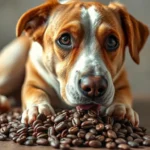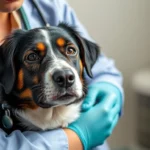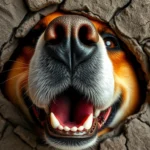
Introduction
Cleft lip and palate are congenital conditions that can affect puppies, leading to a range of health complications if not addressed. Cleft lip refers to a split or opening in the upper lip, while cleft palate involves an opening in the roof of the mouth. These conditions may occur separately or together, and their impact can vary significantly depending on the severity of the malformation. Studies suggest that cleft lip and palate occur in approximately 1 in every 1,000 live births in dogs, making it a relatively uncommon but critical issue for pet owners.
Understanding cleft lip and palate in puppies is crucial for pet owners. Early diagnosis and intervention can significantly improve the quality of life for affected puppies. Neglecting this condition may lead to severe complications, including nutritional deficiencies, respiratory issues, and a higher risk of infections.
Understanding Cleft Lip and Palate
What is a Cleft Lip?
A cleft lip is characterized by a split in the upper lip, which can manifest as a small notch or a more prominent gap that extends toward the nose. The cleft can be unilateral (on one side) or bilateral (on both sides). In unilateral cases, the cleft may appear as a single gap, while bilateral clefts result in a more extensive opening that can affect the lip’s symmetry. This condition can range from mild to severe, impacting the puppy’s appearance and potentially leading to feeding issues.
What is a Cleft Palate?
A cleft palate involves an opening in the roof of the mouth, which can interfere with a puppy’s ability to feed and swallow properly. This condition can be categorized into soft palate clefts, where only the soft tissue at the back of the mouth is affected, and hard palate clefts, which involve the bone structure. Puppies with a cleft palate may struggle with aspiration, where food or liquid enters the airway instead of the esophagus, leading to serious health risks.
Causes of Cleft Lip and Palate in Puppies
The exact causes of cleft lip and palate in puppies are multifactorial and not entirely understood. Genetic predisposition plays a significant role; certain breeds, such as Bulldogs, Dachshunds, and Collies, are more prone to these conditions. Environmental factors during the mother’s pregnancy, such as exposure to toxins or infections, can also contribute. Additionally, nutritional deficiencies in the mother, particularly folic acid, have been linked to a higher incidence of these congenital malformations.
Signs and Symptoms
Physical Indicators
The most apparent sign of cleft lip and palate in puppies is a visible cleft or split in the lip or palate. Physical abnormalities may include asymmetry in the face, unusual facial shapes, or a noticeable gap in the mouth. Other signs can include excessive drooling or difficulty closing the mouth completely.
Feeding Difficulties
Puppies with these conditions often face challenges during feeding. They may exhibit signs of aspiration or choking, particularly if they are bottle-fed or nursing from their mother. Weight gain issues may arise due to ineffective feeding, leading to malnutrition and stunted growth. Observing your puppy for signs of distress during feeding is essential.
Behavioral Symptoms
Behaviorally, puppies with cleft lip and palate may show signs of discomfort or pain, particularly during feeding times. Increased irritability, crying, or reluctance to eat can be indicators that the puppy is struggling with these conditions. Monitoring their behavior can help identify when veterinary intervention is needed.
Diagnosis
Veterinary Examination
If you suspect your puppy has a cleft lip or palate, a veterinary examination is crucial. During the examination, the vet will assess the puppy’s mouth, looking for any visible clefts or abnormalities. Depending on the initial findings, the vet may recommend further diagnostic tests, including imaging techniques.
Imaging Techniques
X-rays or ultrasounds may be utilized to provide a clearer picture of the extent of the cleft and its impact on surrounding structures. Early detection through these imaging techniques is vital, as it can guide treatment decisions and improve outcomes for affected puppies.
Treatment Options
Surgical Interventions
Surgical correction is often the most effective treatment for cleft lip and palate in puppies. The timing of surgery is crucial; most veterinarians recommend performing the procedure between 3 to 6 months of age. This timing allows for physical development while minimizing the risk of complications. The surgical procedures aim to close the cleft and restore normal function and appearance.
Supportive Care
In addition to surgery, supportive care is essential for puppies with these conditions. Nutritional support is critical, especially if the puppy has difficulty feeding. Specialized feeding techniques, such as using a syringe or a soft bottle, may be recommended to ensure that the puppy receives adequate nutrition without risking aspiration. Regular veterinary check-ups post-surgery are crucial to monitor healing and address any complications.
Long-term Management
Long-term management of puppies with cleft lip and palate may involve ongoing health monitoring and possibly additional surgeries or therapies. Adopting a proactive approach to health care can help ensure that your puppy leads a healthy and fulfilling life.
Living with a Puppy with Cleft Lip and Palate
Daily Care Tips
Owners of puppies with cleft lip and palate must adopt specific feeding strategies to prevent aspiration. Feeding smaller amounts more frequently can reduce the risk of choking. Using a shallow dish or a specially designed feeding bottle can also help. Additionally, maintaining proper hygiene is vital to prevent infections around the cleft area.
Creating a Comfortable Environment
Adjusting the puppy’s living space can significantly impact their recovery. Providing a calm, clean environment with soft bedding can help them feel secure. Tools such as elevated feeding stations or orthodontic toys may also be beneficial. Ensuring that the puppy has a safe space to play and explore can facilitate their development.
Support for Owners
Caring for a puppy with cleft lip and palate can be emotionally and financially taxing. Seeking emotional support from friends, family, or support groups can be invaluable. Many online forums and community groups exist for owners of puppies with similar conditions, providing a platform for sharing experiences and advice.
Conclusion
Understanding cleft lip and palate in puppies is essential for all pet owners. Recognizing the signs, seeking timely veterinary care, and being informed about treatment options can greatly improve the quality of life for affected puppies. Early intervention can prevent complications and promote healthy development. Always consult with your veterinarian if you suspect that your puppy may have these conditions, as their guidance will be invaluable in ensuring your puppy’s well-being.
By being informed and proactive, you can provide your puppy with the care they need to thrive, despite the challenges posed by these congenital conditions.









